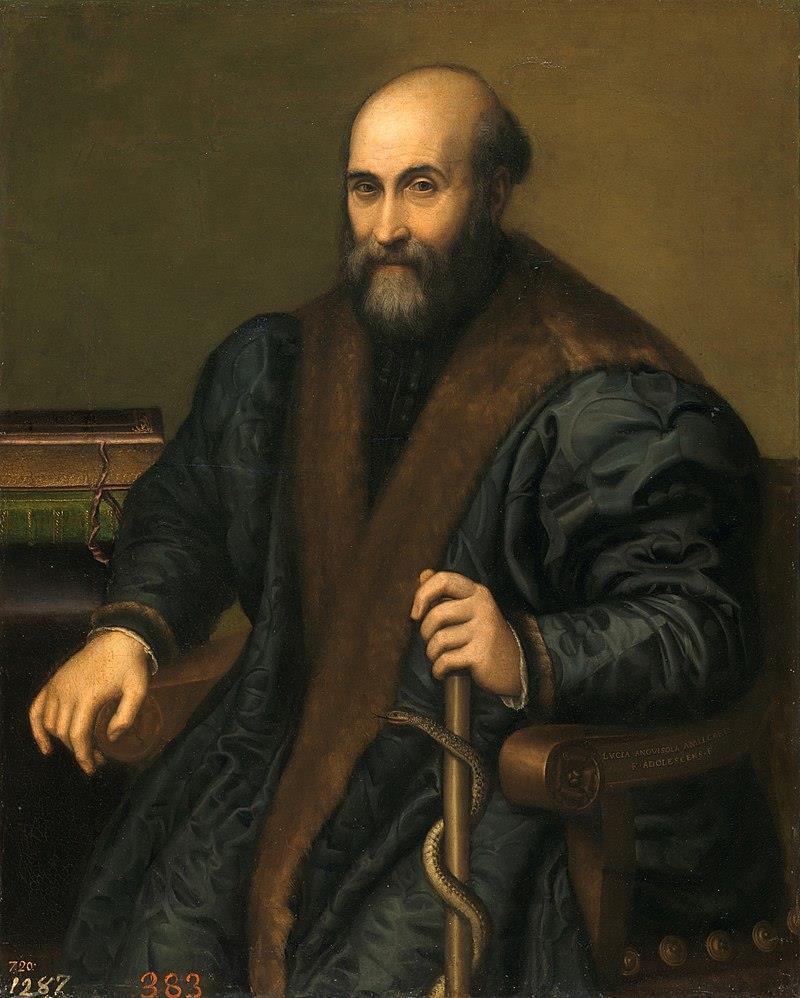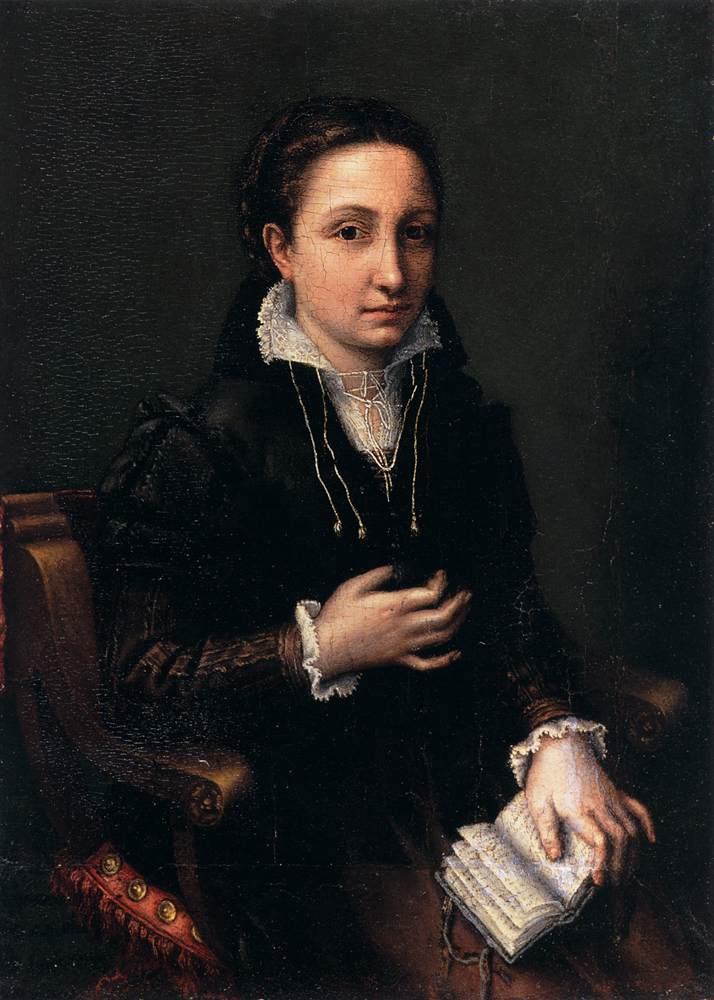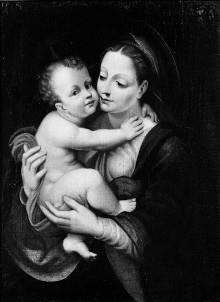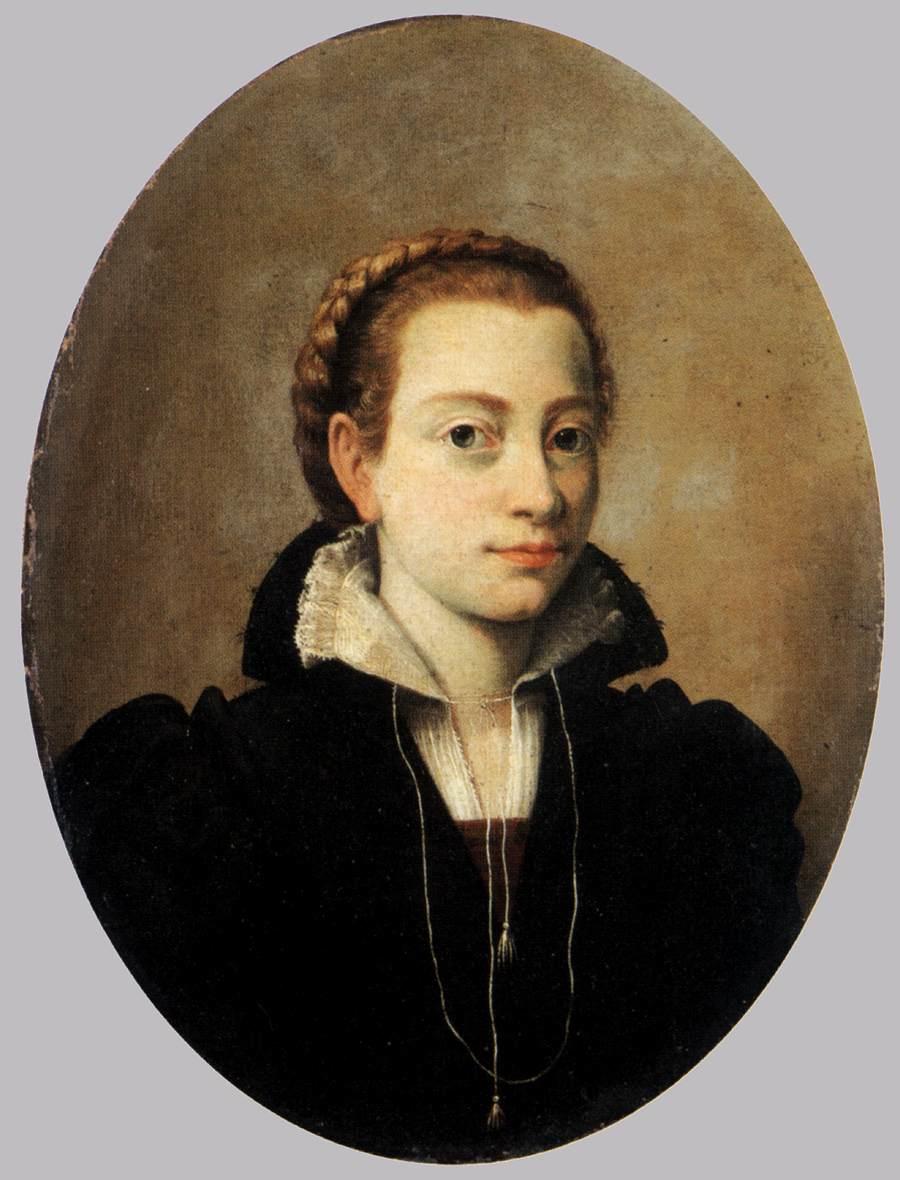Lucia Anguissola
Active in: Italy
Biography
The third of seven children born to Amilcare Anguissola and Bianca Ponzoni, Lucia Anguissola was one of the five daughters encouraged by her parents to pursue her artistic ambitions. Her exact life dates are unknown, although she is thought to have been born in either 1536 or 1538. In 1546, she and her sister Sofonisba were sent to study with Bernardino Campi (1522–1591). She also trained with Sofonisba and later taught her younger sister Anna Maria to paint. In 1557, Anguissola painted a self-portrait with a prayer book that is now in the collection of the Castello Sforzesco in Milan.
Little else is known about the details of Anguissola’s life and career. Just a handful of works were signed and dated by her; others have been attributed to either Lucia or Sofonisba. Anguissola died between 1565 and 1566 under unknown circumstances. When Giorgia Vasari visited Sofonisba in 1566, he wrote “one of her [Sofonisba’s] sisters called Lucia, left a reputation at her death which was scarcely inferior to that of Sophonisba [sic], she also having executed pictures no less beautiful and valued than those painted by her sister.”
Selected Works

Lucia Anguissola, Portrait of Pietro Manna, Physician from Cremona, ca. 1557-60. Oil on canvas, 96 x 76 cm. Museo del Prado, Madrid.

Lucia Anguissola, Portrait of a Lady, Bianca Ponzoni Anguissola (?), n.d. Oil on canvas, 28 x 20 cm. Galleria Borghese, Rome.
Circle
Sister and student of
Sofonisba Anguissola (c. 1532–1625)
Sister of
Elena Anguissola (c. 1532–1584)
Sister of
Europa Anguissola (b. 1536)
Sister and teacher of
Anna Maria Anguissola (c. 1555–c.1611)
Sister of
Minerva Anguissola (c. 1539–1566)
Student of
Bernardino Campi (1522–1591)
Bibliography
Baldinucci, Filippo. Notizie de’ professori del disegno da Cimabue in qua. [6 volumes]. Florence, 1681-1728.
Broude, Norma and Mary D. Garrard, eds. Reclaiming Female Agency: Feminist Art History After Postmodernism. Berkeley and Los Angeles: University of California Press, 2005.
Campi, Antonio. Cremona fedelissima citta, Cremona, 1585.
Caroli, Flavio. “Marco d’Oggiono: Un modello per Lucia Anguissola.” Acad. Leonardo Vinci: J. Leonardo Stud. & Bibliog. Vinciana 8 (1995): 247.
Caroli, Flavio. Sofonisba Anguissola e le sue sorelle. Milan: Mondadori, 1987.
Caroli, Flavio. “Per Lucia Anguissola.” Paragone 277 (1973): 69-73.
Fortunati, Vera, ed. Lavinia Fontana, 1552-1614. Milan: Electa, 1994.
Fortunati, Vera, Jordano Pomeroy, and Claudio Strinati, eds. Italian Women Artists from Renaissance to Baroque. Washington DC: National Museum of Women in the Arts, 2009.
Greer, Germaine. The Obstacle Race: The Fortunes of Women Painters and their Work. New York: Farrar, Straus, Giroux, 1979.
Gregori, Mina. I Campi: cultura artistica cremonense del cinquecento. Milan: Electa, 1985.
Harris, Anne Sutherland and Linda Nochlin. Women Artists, 1550-1950. Los Angeles: Los Angeles County Museum of Art, 1984.
Heller, Nancy G. Women Artists: An Illustrated History. New York and London: Abbeville, 2003.
Jacobs, Frederika. Defining the Renaissance “Virtuosa”: Women Artists and the Language of Art History and Criticism. New York: Cambridge University Press, 1997.
Kühnel-Kunze, Irene. “Zur Bildniskunst der Sofonisba und Lucia Anguissola.” Bruckmans Pantheon 20 (1962): 83-96.
Lamo, Alessandro. Intorno alla scoltura, e pittura. [1584]. Appended to G.B. Zaist, Notizie historiche de’pittori, scultori, ed architetti cremonesi. Cremona, 1774.
Parker, Rozsika and Griselda Pollock. Old Mistresses: Women, Art, and Ideology. London: Routledge and Kegan Paul, 1981.
Schwok-Bionda, C.L. “Autour de Sofonisba Anguissola et de ses sœurs.” L’Oeil 467 (1994): 32-37.
Tinagli, Paola. Women in Italian Renaissance Art: Gender, Representation, Identity. Manchester and New York: Manchester University Press, 1997.
Entry Notes
For Jane Martin, the first woman to chair the art museum’s National Advisory Board, who has given her love, time, attention, and effort to her community, the university, and the museum, I gratefully dedicate this entry on Elisabetta Sirani, an especially generous and gifted artist.—Heidi Gealt



